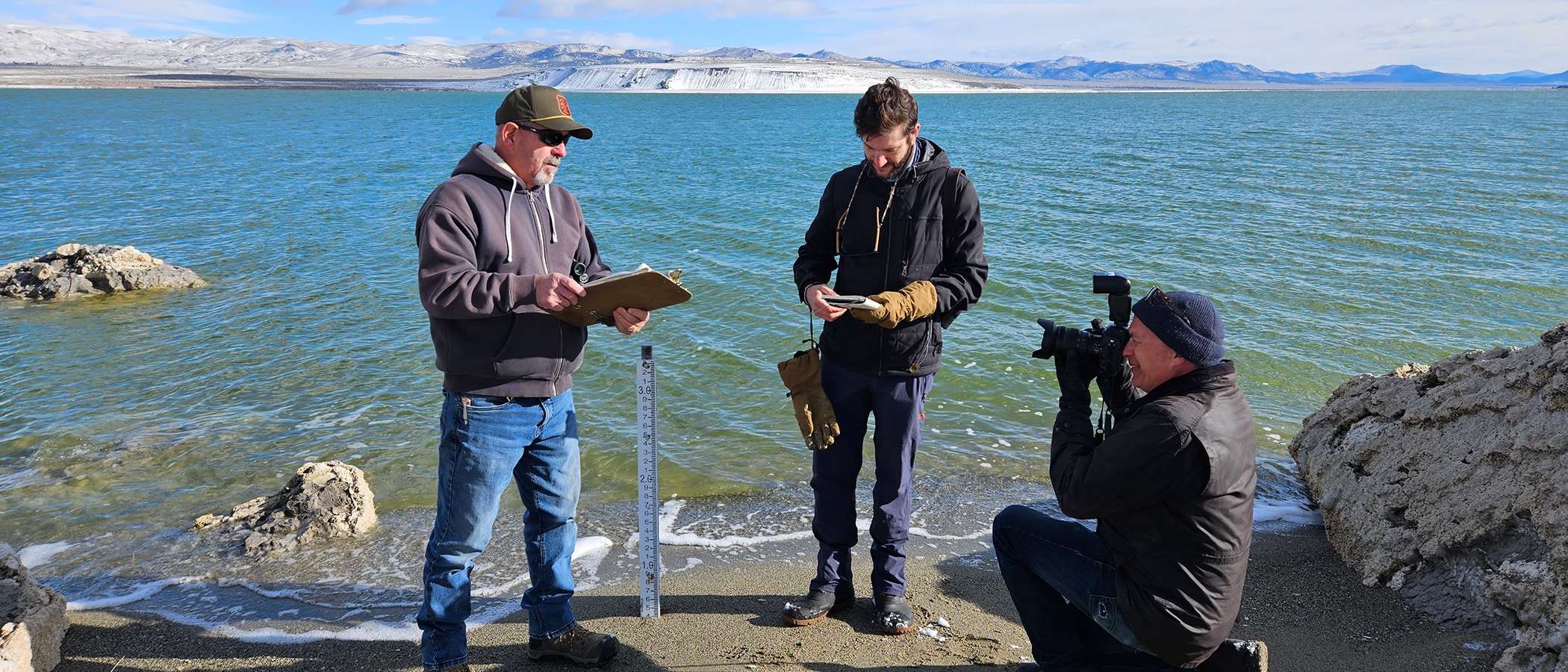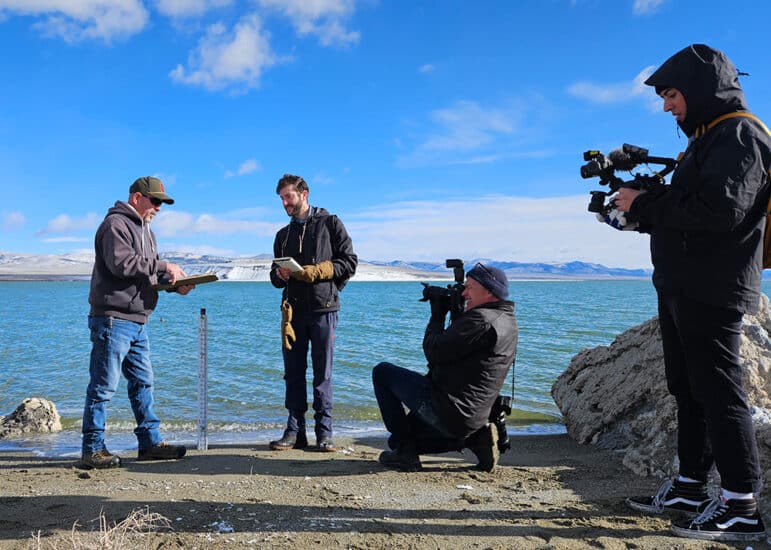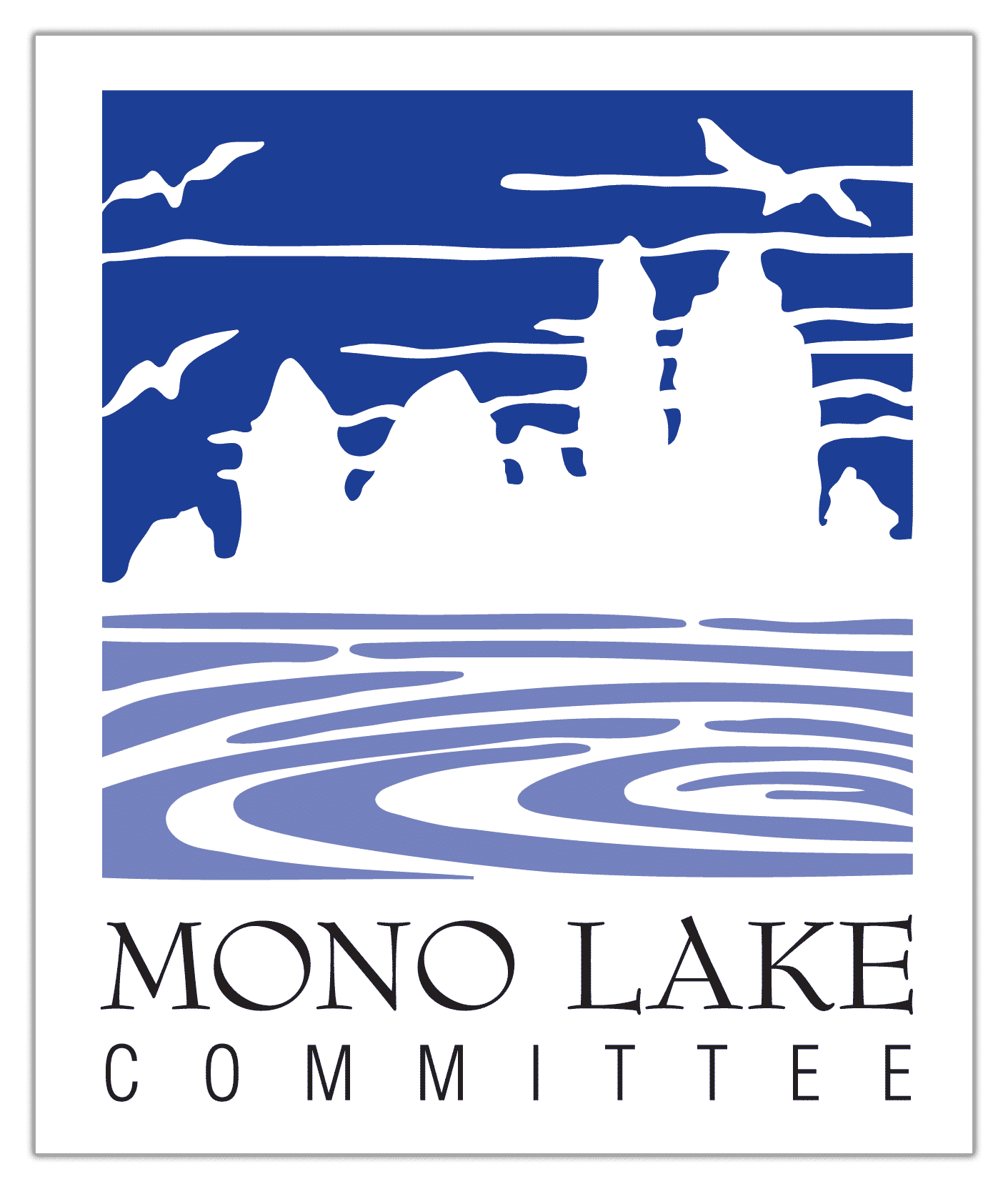
Mono Lake Committee and Los Angeles Department of Water & Power (DWP) staff members met at the edge of Mono Lake on April 1 for the annual joint lake level reading. With binoculars and cameras focused on the lake gauge, the collaborative affair produced, as usual, a consensus on the precise surface elevation of Mono Lake: 6,383.29 feet above sea level.
But in downtown Los Angeles, far from the shores of Mono Lake, DWP leadership advanced an uncommon view of what the lake level means, and what to do about it.
Misleading press release from DWP
Mono Lake friends know well that, after years of study, the California State Water Resources Control Board established a management level for the lake of 6,392 feet above sea level—a level chosen in order to protect numerous Public Trust resources, including ecological health, air quality, scenic and Tribal resources, and unique, internationally significant habitat for millions of migratory and nesting birds.
Yet in a press release about the April 1 lake level reading, DWP avoided mention of the 6,392-foot lake level requirement, or the fact that the lake is only halfway to the requirement and a decade behind schedule in getting there.
The DWP headline declared that the lake remains at a “steady and encouraging” level. It’s unclear what is encouraging, and behind the scenes, plans for water exports were being made without regard to their direct effect of lowering Mono Lake.
DWP’s press release also quoted a senior manager saying, “While every other Western terminal lake continues to decline in elevation, Mono Lake has, on average, been trending up for the past 30 years.” However, the near collapse of sister saline systems like Great Salt Lake is hardly consolation.
As questions about the DWP quote rolled in, the Committee was quick to calculate that due to rapid lake rise in the 1990s the DWP statement was mathematically correct. However, it is equally true that the level of Mono Lake has trended down for the past 25 years with DWP maximizing its diversions every year. And that is the problem at hand: Mono Lake is not on track to recover from decades of excessive DWP water diversions, present-day DWP diversions are suppressing recovery, and it’s time to do something about it.

DWP plans to maximize water export
Two weeks later, DWP released its draft operations plan for the 2025–26 runoff year and a water diversion and export plan that showed no regard for the level of Mono Lake.
Last year, the annual operations plan said “planned export is 4,500 acre feet,” reflecting the commitment of the mayor of Los Angeles to keep water diversions at the same level as 2022 and 2023 in a voluntary effort to help the lake heal. DWP, however, in late 2024 decided to break that promise and proceeded to export 250% of the planned amount.
This year, DWP’s plan states the agency will maximize water export and take the full 16,000 acre-feet that is possible—but not required—under its water licenses. That volume of water is equivalent to a third of a foot for Mono Lake, meaning DWP water diversions will cause Mono Lake to be lower on April 1, 2026 than it should be. An additional 5,000 acre-feet of Mono Basin groundwater will be captured by DWP’s Mono Craters Tunnel and delivered to LA as well. These impacts on the level of Mono Lake are real, and they add up over the years; indeed, this is why the 25-year trend in lake level is not positive.
State Water Board hearing is crucial
With recent history confirming that DWP is not willing to take any voluntary steps to meet the State Water Board’s Public Trust requirement to protect biodiversity at Mono Lake, what can be done? All eyes remain on the State Water Board, which is planning for a hearing to review and modify diversion rules, given that its mandate hasn’t been met after 31 years.
The timeliness of Board action is critical. For all its beauty, Mono Lake is ailing while it waits for its water to rise to a healthy level, a situation starkly illustrated by the California Gulls having their worst year of reproduction on record. This is the year to speak up for Mono Lake, to call for action, and to set the stage for real, measurable rise and recovery.
This post was also published as an article in the Summer 2025 Mono Lake Newsletter. Top photo by Bartshe Miller.
